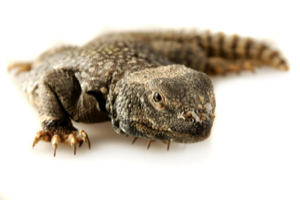
Below are my reviews of various reptile and amphibian books, films, and documentaries.
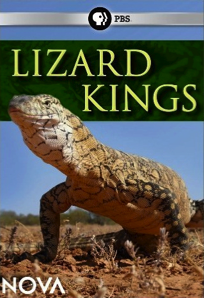
Originally aired: October 20, 2009
Running Time: 60 minutes
Tagline: Meet the monitors, the largest, fiercest, and craftiest lizards on Earth.
Lizard Kings provides an entertaining gaze into the truly fascinating, and secretive, world of monitor lizards. Much of the film focuses on Eric Pianka's lizard studies in the Red Sands section within the Great Victoria Desert of Western Australia—a place 250 miles from civilization with 55 species of lizard, of which six are monitors.
The spotlight is cast upon several different species of lizard, including the giant Komodo dragon (Varanus komodoensis) , the Perentie monitor (Varanus giganteus), the Gould's monitor (Varanus gouldii), the Merten's Water monitor (Varanus mertensi), the Short-tailed monitor (Varanus brevicauda), and his personal favorite: the Pygmy monitor (Varanus eremius).
The Pygmy monitor (Varanus eremius) is a favorite due to its small size (8" in total length, the smallest monitor in the world), its fierce demeanor, and its affinity for eating other lizards. Pianka actually has 175 lizard live traps in the desert, and checks each of them twice per day with his associate!
Finding a Gould's monitor is special for Pianka, and at one point he digs up a tunnel system created by a Gould's. It is complete with false tunnels, much like how Komodo dragons dig false egg chambers to throw off potential threats.
One section of the film deals with a new technology called a "Lizard Cam." It's exactly what you're thinking; they use velcro to strap a wireless camera to the back, or head, of a monitor lizard. Then, they stay in the lizard's general vicinity and watch the screen for new behavioral findings. The reactions to the lizard video footage were a bit hyperbolized. For instance, one monitor lizard started climbing a tree, and they were astonished. Another dug a tunnel in approximately 15 minutes to escape being followed, and they were blown away. Cool, but maybe a bit overdone.
There is some really interesting footage of Merten's Water monitors in their natural habitat, including successfully diving for fish, chasing-off other Merten's from the area, and protecting its fish catches from birds that dive-bomb the lizard to steal its food.
Personally, my favorite section of LIzard Kings was without question the intelligence tests. Let me take a step back. Earlier in the film, Pianka makes a comment I completely agree with: "I dare anybody to go to a major zoo and look a monitor lizard in the eye. It's looking back at you. Other lizards don't do that." I'm shaking my head in amazement right now as I type this review because...I think it's true. Anyways, back to the tests.
Monitor lizards are put into test chambers, where they need to solve simple cause-and-effect puzzles to receive an edible treat. In the cases shown, a Savannah monitor (Varanus exanthematicus) was used. The monitor had to walk up to the front of the chamber where there was a white, and a black, rubber ball attached to the wall. In order to receive the food, the Savannah monitor had to bite the black ball. Repeatedly, the monitor chose the correct ball. To further test the results, the scientists switched placement of the black and white balls. Sure enough, the monitor crossed-over to the black ball. Amazingly, they have found that monitor lizards can count to six. I won't elaborate on the details of the experiment, but it will make sense when you watch the film.
Lizard Kings was more entertaining than informative—I thoroughly enjoyed the film. Beautiful locations, impressive monitors, and excellent camerawork make for a memorable viewing experience that will likely pique your interest in monitor lizards.

Release Date: May 11, 2010
Running Time: 91 minutes (director's cut: 201 minutes)
Tagline: The first feature documentary on the great reptile culture.
Herpers is the first of its kind—a documentary that attempts to explore the growing culture of reptile keeping, herping, and breeding within the United States, spanning from coast to coast. It toes the line between being pleasantly informative, while never taking itself too seriously.
Sure, you'll hear some surprising statistics peppered throughout the film (did you know that 4% of U.S. households own reptiles?), but what I found most engaging were the fascinating segments focused on reptile breeders. Brian Sharp, Brian Barczyk, Chad Brown (Pro Exotics), and a few other breeders, take you on a tour of their facilities, discuss their methodologies and philosophies, as well as show you some of their more impressive reptiles.
The visual sharpness (anamorphic widescreen) and camera work is excellent for a low budget documentary, as is the overall sound quality. The DVD itself is set to region 0, meaning is plays in any country. Frankly, the only amateurish facet of this film is the annoying song entitled "Herpers." Personally, I found it uber grating! Here are the lyrics:
Well I’ve spent all my cash
This is more addicting than hash
I’ve been to places most people have never heard
Herps are what I seek
From the plains of Kansas to Mozambique
I know what I am, and I say it loud and proud!
I’m a herper, herper
I’m a herper, herper
I’m a herper and I love it!
I have no free time ‘cuz I breed herps of every kind
That's why my girlfriend thinks I’m out of my mind
I understand genetics better than a high school science teacher gets it
It’s a badge of honor that my life I’ve clearly vowed!
I’m a herper, herperI
’m a herper, herper
I’m a herper and I love it!
I’ve worked with toads and turtles and snakes
It’s a dedication I can’t fake
The only centerfold I drool over is in Reptiles Magazine
If you take a look you’ll seeThere are thousands just like me
We know what we are, and we say it loud and proud!
I’m a herper, herper
I’m a herper, herper
We are herpers
We are herpers
And we love it!
It's worth mentioning that this reptile film's focal point is snakes and, if I had to estimate, that translates to about 90% of it. But, rest assured, even if you're not into snakes, you'll find the film pretty entertaining. The director canvasses the country showing everything from herping outings, to reptile shows, to breeder commentary, to hobbyist interviews.
Speaking of hobbyist interviews, only one was disturbing, and worthy of a bona fide eyeroll—I'm talking about Henry Lizardlover. Yes, that's the guy's real name (he had it legally changed). He's very strange, and I'm going to leave it at that—you'll have to watch the documentary to see what I'm talking about.
Herpers has won a few low key film awards, and I recommend you check it out if you're at all into the reptile and amphibian hobby. There is a director's cut version that has a significant amount of extra content, in the form of deleted scenes and extra interviews. The most amazing factoid in Herpers: the story they tell about the longest living tortoise in recorded history—one given to the British royal family by Captain Cook. Incredible.
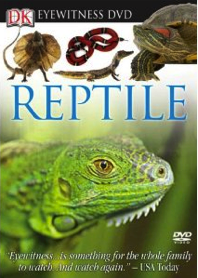
Release Date: December 3rd, 2007
Running Time: 62 minutes (including the "making of" segment)
Narrated by Martin Sheen, this film about reptiles contains more high level information and beautiful cinematography than anything else. Factoid-wise, I learned a few things. Did you know that 30,000 to 40,000 people perish every year from snake bites? Or that no snakes exist on the island of New Zealand? Or that there are three species of Tuatara?
The visuals are impressive, including some crisp footage of a small lizard basking on top of a marine iguana's head, a python striking directly at the camera, and a basilisk walking across water in slow motion.
If you're looking for a reptile film that will appeal to both young and old, while still maintaining some valid educational value, you should consider picking up this DVD.
Amphibian: Eyewitness DVD
Release Date: September 15th, 2008
Running Time: 62 minutes (including the "making of" segment)
This version of the Eyewitness series is focused on Amphibians, and is once again narrated by Martin Sheen. This edition was considerably more informative than the Eyewitness Reptiles DVD, as it was absolutely packed with trivia-esque information.
For instance:
- The poison in a single dart frog could kill 1,000 humans
- 17th century England literally thought frogs rained from the sky
- Canned frog legs were common in America in the 1950's
- An African bullfrog ate 14 baby cobras in one sitting
- A painkiller 200x as potent as morphine has been found in a frog's skin
- Frogs and toads only see in black and white
- African clawed frogs have yielded an entirely new class of antibiotics
These are just a few of the entertaining amphibian factoids contained within this DVD. Two of my favorite sections were on the Darwin's frog reproduction (males hold the eggs in their mouths until they hatch, at which point he spits them up), and the Canadian grey treefrog, which allows two-thirds of the water in its body to freeze solid during winter—even its heart stops beating. Amazing.
If you're a fan of amphibians, you're going to enjoy this DVD.
Release Date: September 15th, 2008
Running Time: 62 minutes (including the "making of" segment)
This version of the Eyewitness series is focused on Amphibians, and is once again narrated by Martin Sheen. This edition was considerably more informative than the Eyewitness Reptiles DVD, as it was absolutely packed with trivia-esque information.
For instance:
- The poison in a single dart frog could kill 1,000 humans
- 17th century England literally thought frogs rained from the sky
- Canned frog legs were common in America in the 1950's
- An African bullfrog ate 14 baby cobras in one sitting
- A painkiller 200x as potent as morphine has been found in a frog's skin
- Frogs and toads only see in black and white
- African clawed frogs have yielded an entirely new class of antibiotics
These are just a few of the entertaining amphibian factoids contained within this DVD. Two of my favorite sections were on the Darwin's frog reproduction (males hold the eggs in their mouths until they hatch, at which point he spits them up), and the Canadian grey treefrog, which allows two-thirds of the water in its body to freeze solid during winter—even its heart stops beating. Amazing.
If you're a fan of amphibians, you're going to enjoy this DVD.
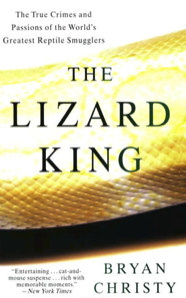
Published: August 5, 2009
Author: Bryan Christy
Pages: 256
The Lizard King is, without a doubt, the most riveting reptile-related book I've ever read. Period. End of story. I honestly hated putting it down. It isn't a reptile husbandry book, or a species account. It's an in-depth non-fiction story that chronicles the astounding and often illegal events surrounding Mike Van Nostrand (and his father) as they run Strictly Reptiles, the largest reptile and amphibian import-export business in the United States.
This book has just about everything—nostalgic herping stories, undeniable greed, reptile smuggling, defiance, federal investigations, and a tremendous amount of intrigue. One of the main characters featured is Anson Wong, the asian "Pablo Escobar" of reptile smuggling. Need a Tuatara? Done. Komodo dragon hatchling? No problem. Bribe any number of government officials for an under-the-table CITES permit? Simple.
Strictly Reptiles, located in Florida, imported and exported hundreds of thousands of reptiles each year, making millions upon millions of dollars...legally! But, this book focuses far more on the illegal side of the business—and it was substantial. Federal investigations and stings ensued, but I'm not going to give anything away. Get the book!
If you're a reptile hobbyist, you're going to find this book absolutely fascinating.

Published: September 15, 2008
Author: Bruce Means
Pages: 238
Stalking the Plumed Serpent is a herping book broken up into (mostly) unrelated chapters, each of which colorfully describes a particular adventure involving reptiles or amphibians. The herping stories take place in such reptile meccas as the U.S., Australia, Central America, and even faraway Madagascar. The chapters are relatively short, and the author's writing style is easy to digest.
Some of my favorite chapters included stories about a dangerous giant Alligator snapping turtle encounter, a gecko with removable fish-like scales, and first-hand descriptions of bat-eating snakes and treefrogs. I should mention that most of the book focuses on snakes, and by "most" I'd estimate 80% or more. The author's enthusiasm when finding a new reptile or amphibian pours out of the text, and becomes almost contagious.
The author has a penchant for rattlesnakes, so much so that he mentions actually liking the smell of rattlesnake musk. Yes, you read that correctly. It's this type of passion for reptiles that helps bring his herping stories to life. Another great feature is a short section with some beautiful color photographs taken during the very stories you've been reading.
There are only two negative aspects of this book about herping. Firstly, Bruce Means (the author) is apparently very impressed with having an earthworm named after himself (Diplocardia meansi), as he mentions it an exorbitant number of times in one particular chapter. Secondly, his environmental admonishing eventually gets a bit tiresome. In all, these are fairly minor annoyances.
Captivating at times, and entertaining throughout, Stalking the Plumed Serpent is replete with engaging reptile and amphibian adventures. There are many sections that will keep you guessing, wondering, what reptile or amphibian will next cross his path. It makes you want to grab your camera and go herping.

Published: Monthly
Pages: 65-70
Ok, Reptiles magazine isn't technically a book, but it is relevant reptile literature so it's worthy of a spot on the list. Despite the name, this magazine covers both reptiles and amphibians, although reptiles do get more print space.
Each monthly issue contains an interesting cover article, a reptile Q&A section, a veterinarian report, a reptile retailer spotlight, extensive classifieds, stunning species pictures, and a host of smaller articles about varying species of reptile or amphibian. For instance, the most recent issue I received had a cover article on Dumeril's boas, as well as ancillary articles about marble salamanders, grass lizards, turtle health tips, herping in Saudi Arabia, and breeding spiny turtles.
Vivarium magazine was the first herpetoculture magazine, but they ceased production years ago. And although not identical in substance, Reptiles magazine picked-up where they left off. A year-long subscription is just $14.99, which breaks down to $1.25 per month. At that price, it's worth every penny. If you're a reptile or amphibian hobbyist, you really should be getting Reptiles magazine. Not only will you be supporting the reptile hobby, but there is a lot of useful information you can glean from its pages each month.
The Audubon Society Field Guide to North American Reptiles and Amphibians
Cover: vinyl-bound
Pages: 744
This is without question the creme de la creme of North American herping guides. Imagine how intelligent you'll sound when you say that your preferred reading material is "The Audubon Society Field Guide to North American Reptiles and Amphibians." Nice!
Since I was just a kid, I've been using this great little guide (several editions earlier) to identify, and learn about, different reptiles and amphibians I would come across while herping with my friends. It's always a thrill to find something new and peruse through this book to discover what new species of reptile or amphibian you're holding in your hand.
Here's how the guide works: you page through the more than 300 crisp color photos to find the snake, lizard, frog, toad, turtle, tortoise, newt, salamander, or crocodilian you're trying to identify. After that, you use the corresponding code below the picture to look the species up in the back of the guide, which has detailed physical descriptions, breeding cycles, status, size, geographic range, feeding habits, habitats, and relevant species notes. It really is comprehensive.
If you're a herper, want to know more about the reptiles and amphibians that surround you, or where to locate certain species, this is a must have guide. I highly recommend picking up a copy.
Cover: vinyl-bound
Pages: 744
This is without question the creme de la creme of North American herping guides. Imagine how intelligent you'll sound when you say that your preferred reading material is "The Audubon Society Field Guide to North American Reptiles and Amphibians." Nice!
Since I was just a kid, I've been using this great little guide (several editions earlier) to identify, and learn about, different reptiles and amphibians I would come across while herping with my friends. It's always a thrill to find something new and peruse through this book to discover what new species of reptile or amphibian you're holding in your hand.
Here's how the guide works: you page through the more than 300 crisp color photos to find the snake, lizard, frog, toad, turtle, tortoise, newt, salamander, or crocodilian you're trying to identify. After that, you use the corresponding code below the picture to look the species up in the back of the guide, which has detailed physical descriptions, breeding cycles, status, size, geographic range, feeding habits, habitats, and relevant species notes. It really is comprehensive.
If you're a herper, want to know more about the reptiles and amphibians that surround you, or where to locate certain species, this is a must have guide. I highly recommend picking up a copy.
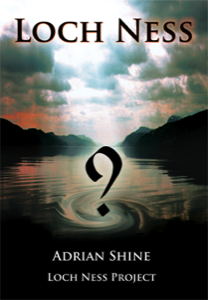
Published: June 1, 2006
Author: Adrian Shine
Pages: 32
While I was at the 3D Loch Ness Experience in Edinburgh, Scotland, recently, I picked-up a copy of Adrian Shine's book on Nessie. My copy was signed, which I believe easily doubles the value of the $3 book. [sarcasm intended]
Naturalist Adrian Shine has been chasing the Loch Ness monster (nicknamed "Nessie") for decades and was, in fact, a leader on the largest sonar-based Loch Ness expedition in history--Operation Deep Scan, in the 1980's.
He has fittingly published his Nessie-related thoughts, findings, questions, pictures, stories, myths, legends, and more in an easy-to-read paperback book simply entitled "Loch Ness." One of the most apparent characteristics of Adrian Shine is that he is honest with himself. He wants to believe in the Loch Ness monster, but can't come to a solid conclusion. Along the way, he not only asks pertinent questions that need answering, but also debunks many myths.
His approach is definitely of the scientific nature, but is peppered with logical questions, such as: how could all of the Nessie sightings be fabricated? What were the solid, moving objects his sonar picked up during Operation Deep Scan--objects that were too large to be fish?
The book provides background, controversial pictures, expedition results, folklore, and even a feasibility summary on the likelihood of Loch Ness's food chain supporting large aquatic reptiles. It's an entertaining read, and a quick one at that, as it can be finished in an hour or so.
In the end, Adrian Shine's book about Nessie is an excellent summary that can get virtually anyone up-to-date on the subject of the Loch Ness monster. You really wouldn't need to read any other publication--it covers virtually everything from debunking myths to thought provoking mysteries.



